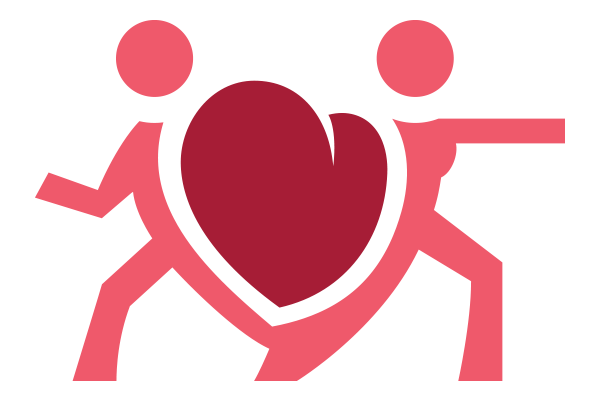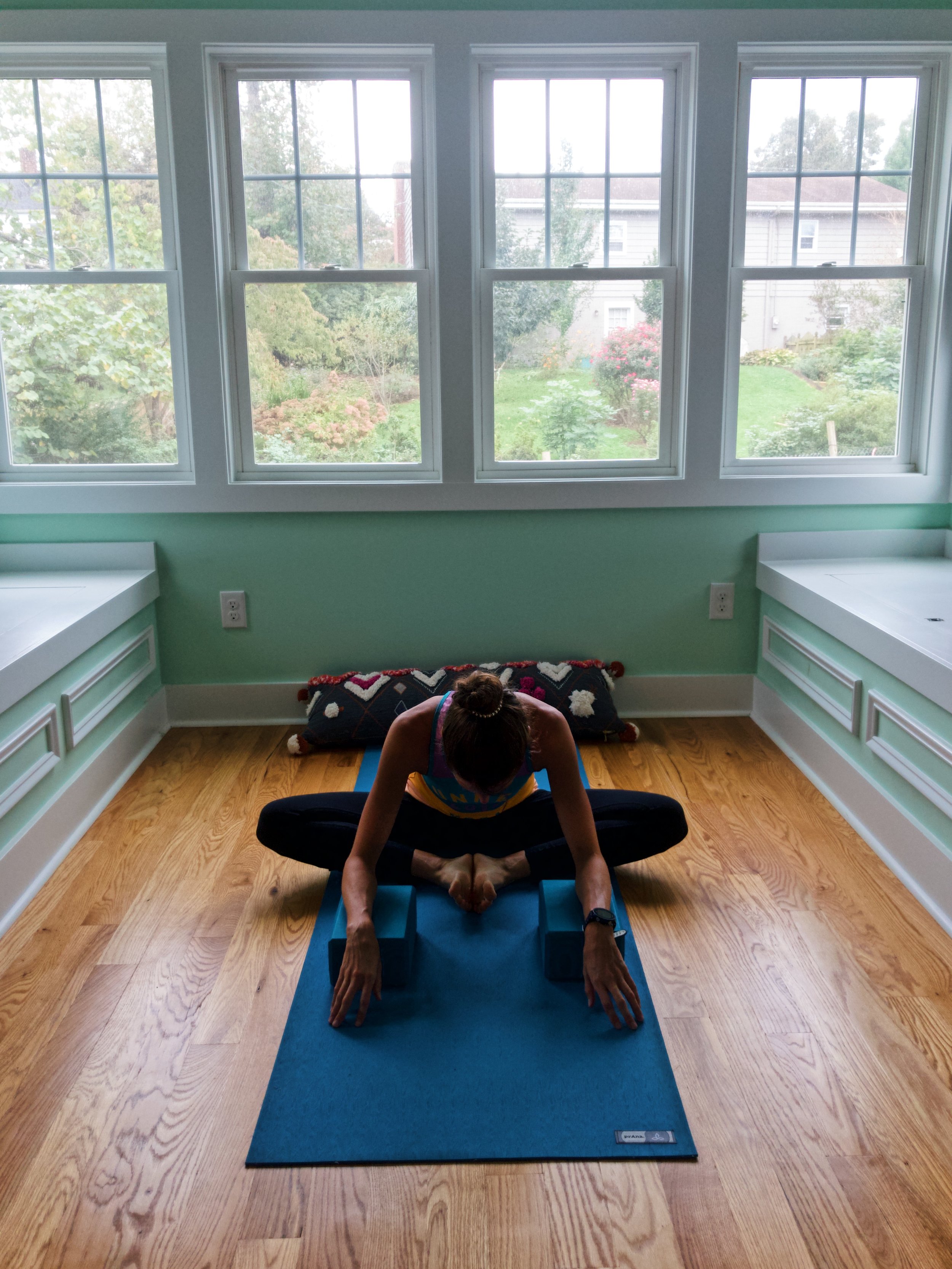Yoga for Runners: Promoting Better Sleep
Anyone who knows me now may have trouble believing that I ever had trouble sleeping well. I sleep very hard and truly love sleeping. I feel drastically better when I get a lot of sleep, and have never been one of those people that can just squeak by on 6 hours of sleep per night. (If you are one of these people, I am jealous!) I try to prioritize good sleep, because it means a far greater quality of life during the times I am awake!
However, back when I was getting my Masters in English at Notre Dame, I truly did not sleep well at all. (I actually slept far better in my Ph.D. program than my M.A.—probably because I wasn’t so worried about getting into a Ph.D. program anymore!) Firstly, in my early years of grad school, I was not the smartest about working until the wee hours of the morning. I never put myself in a bind time-wise that I actually had to be staying up late, but once I’m on a roll, I sometimes have trouble stopping a task until I’m finished. I realize this is not a problem everyone has—and might even sound like a problem you wish you had! Our strengths are often our weaknesses!—but once I got type-typing away on an idea on my laptop, I had trouble putting it down until I had it just right, and unfortunately for me, that just right moment often would seem to occur past 3am or so. This, of course, led to my being tired the following morning, again staying up too late, etc. until it was an endless cycle of late nights and not-good mornings.
I do think it’s fairly common to have a period within your life where sleep doesn’t come so easily for whatever stressful reason. If you’re in one of those periods, never fear! It WILL and CAN pass! It did for me, and it can for you too! (During my M.A., I also once wrote a legitimately beautiful 17 page final paper in essentially one sitting, which also left my brain super cracked for at least 48 hours. Never again! Again, this was not a necessary procrastinated writing session, but I was in the zone and figured I might as well finish the job!) We live and, hopefully, learn. I think with a little self-assessment, you can do a lot to create a better sleep environment for yourself, and take advantage of the benefits of deeper sleep.
Wide-legged forward fold with a “bridge” made out of two blocks with a bolster pillow on top. Note you can adjust the props however you feel to feel supported, and can arrange these either with your forehead on a prop OR just your forearms on props like one yoga block each.
First, if you haven’t read the first two blog posts in this series, now is a good time to do so (#1: Tomorrow’s Sleep is Tomorrow’s Run, #2: Sleeping Better to Run Better): this third post is sort of the “cherry on top” of the good sleep ice cream cone. Here, I will lay out some easy-to-do poses and sequences that are great for runners or any athlete to do before bedtime. One great thing that I remember my college coach saying to us during finals week was to keep our practice time for practice, and our finals time as finals time. In other words, give each time its respective activity. Compartmentalize to treat each with more respect and enjoy both more. The same is true of your sleep time. Just as I learned to not write away during my sleep time, I also learned to adequately give myself a “transition time” where I am awake but getting my mind and body more ready for sleep. You should not immediately ride a roller coaster and then expect to fall into a deep slumber; use these yoga poses as a way to allow your body to relax, your mind to calm, and to set yourself for the best savasana ever: a good, deep sleep.
1. wide-legged forward fold with props
This pose is also great as a way to “trick” yourself into doing some yoga—since you can very easily read a book while in this position too. While here, concentrate on relaxing your legs, working upwards from your feet, and periodically check back in and repeat this process to ensure no tension has crept back into your legs. Stay here 5-10 minutes. This is one of the poses that when I teach it in in a yin class, students often don’t want to leave the pose! You will likely find you get more relaxed as you are here.
2. bound angle pose into diamond pose (see above side-by-side photos)
Bowtie is especially effective at alleviating tension and bound up places through your upper back and shoulders, an area where many of us carry a lot of tension.
Begin in a traditional baddha konasana, or bound angle pose, with soles of feet together, and feet as close to body as is comfortable for you. Prop yourself with any blankets or pillows under your knees so you are fully supported and can relax more deeply. Inhale tall through your spine, then exhale to pull your collarbone forward, keeping spine long. Inhale, then on your next exhale, allow yourself to round into the forward fold. Use props under your forehead as you like. After 1-2 minutes here, inhale back up to seated and slide your feet (still connected) as far as is comfortable from your body. This version of bound angle pose is often called diamond pose (from the diamond shape you create with your legs). Repeat the breathing process you used for regular bound angle, and again stay 1-2 minutes, continuing to breathe smoothly. In diamond pose, you will likely find that your forehead gets closer to or more comfortable on the ground, so adjust any props as needed. Also, notice the totally different leg stretch from simply sliding your feet further from you!
3. bowtie
“Cat pulling tail” is an effective hip and IT band stretch for your top leg, but also a great quad stretch for your bottom leg—and all you have to do is just lie here and relax!
This is one of my all-time favorite yin yoga poses. Lay on your stomach and cross your arms under your body, essentially making yourself into a little human bowtie. For simplicity of explanation here, begin with your left arm crossed under the right. Palms face the ceiling. Just move arms as far away as is comfortable, where you just feel a moderate stretch—time brings the intensity here. Pause 1-2 minutes, then head to “cat pulling tail” as outlined below, before repeating bowtie and “cat pulling tail” on side two.
4. cat pulling tail
From bowtie, leave your underneath (left) arm where it is. Now use your top (right) arm to gently roll your entire body to face the right side of your mat. Your left side of your body is now down on the mat, while right side faces the ceiling. Send your top (right) leg straight out to the side. Bend bottom leg (left) knee and grab your left foot with your right hand. Once here, roll your top (right) shoulder down towards the floor, as though trying to send your chest towards the ceiling. Use any and all props needed here: perhaps sliding a blanket under your right shoulder, or propping up your straight right leg with any pillows under your foot if the right hip/IT band stretch is very intense for you. I’d recommend recruiting a friend to help with the props if you can so you don’t have to move as much to get comfortable. Stay here 1-5 minutes. Release your bind, roll back over to your belly, and commence bowtie on side two with right arm underneath. Repeat this step here to do “cat pulling tail” on your second side too.
In supported bridge pose, really just allow yourself to relax down into your block.
5. supported bridge pose
Roll over to your back, bend knees and plant feet on the ground. Press into heels to lift hips and slide a yoga block under your sacrum. (Reminder that your sacrum is that big bone above your hips but lower than your lower back. I repeat, do NOT put the block under your lower back—it should be lower than that, and you should feel very supported here by the connection between sacrum and block under it.) Once here, gently tuck shoulderblades under your back so your chest is open. Allow palms to face the ceiling along sides of your body, or try out goalpost arms. Allow yourself to fully rest into your block, relaxing especially through backs of your legs.
Even if you only have five minutes, try just one or two of the poses above. These poses also benefit you as a runner and athlete by helping your legs to recover, and bowtie helps undo much of the tension that most of us tend to hold in the upper back and shoulders, whether we are runners or not. At times, we do so much rushing around during the day, that it can seem difficult to take a “time out” before rushing off to bed, but with just a few minutes, you can do both your mind and body a service and set yourself up for more restful slumber.






